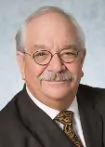Schnader's Saul Wilensky, Carl Schaerf and Matthew J. Kelly Jr., recently authored "Foreseeability and the Erosion of the Material Alteration Defense" for DRI's November 2014 edition of For The Defense.
In New York, unlike many other states, the material alteration defense used to be a fairly absolute defense presenting no jury questions at all, based on the leading case Robinson v. Reed-Prentice, 49 N.Y.2d 471 (1980). Hoover v. Case New Holland N.A., Inc., decided by the New York State Court of Appeals (the highest court in New York State) in April 2014, changes that rule significantly. The decision puts New York more in conformity with other states and, in many circumstances, will allow a jury to determine whether a material alteration serves as a bar to a product liability claim.
The authors conclude that Hoover will likely spawn a lot more litigation in New York State. To some degree it brings New York into conformity with the rest of the country, and in other respects it is even more plaintiff friendly than comparable law outside the jurisdiction. It establishes a potential pathway around Robinson by allowing plaintiffs to claim that the safety itself was defective, whether because it required excessive maintenance or interfered with production. This pathway creates a new route to the employer's coverage, and it will be exploited. For manufacturers sued in New York, and elsewhere, there are new challenges, and a creative approach to the defense is required. There are many open questions to answer.
The content of this article is intended to provide a general guide to the subject matter. Specialist advice should be sought about your specific circumstances.
We operate a free-to-view policy, asking only that you register in order to read all of our content. Please login or register to view the rest of this article.


